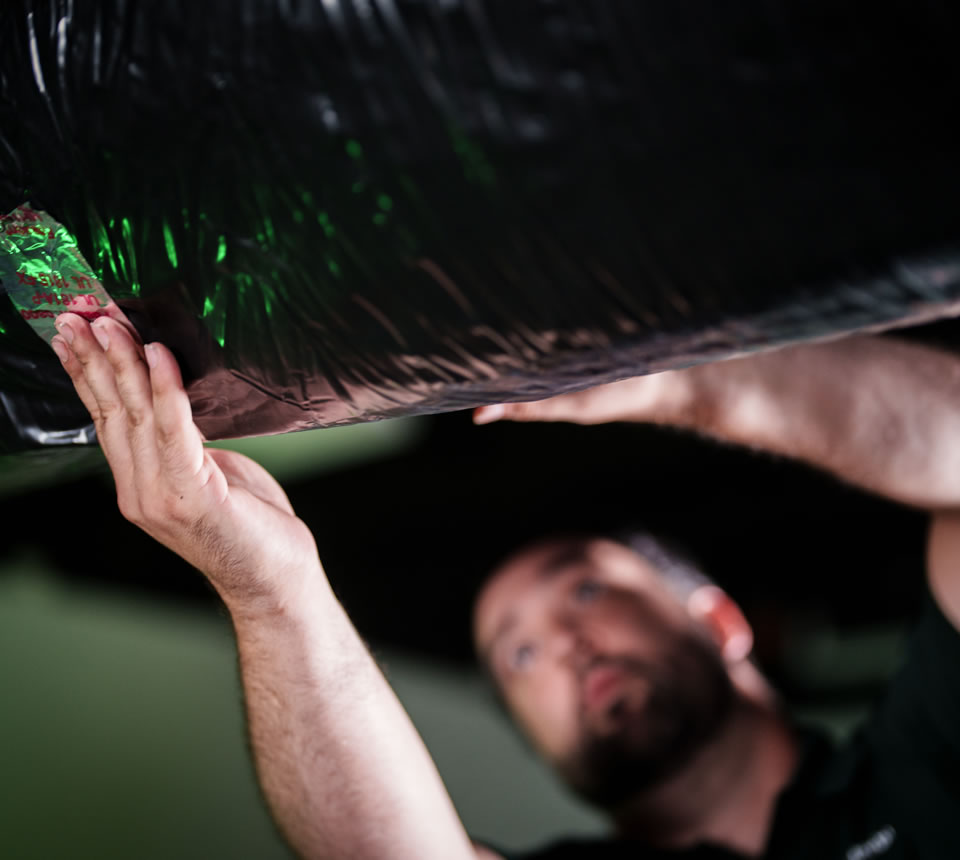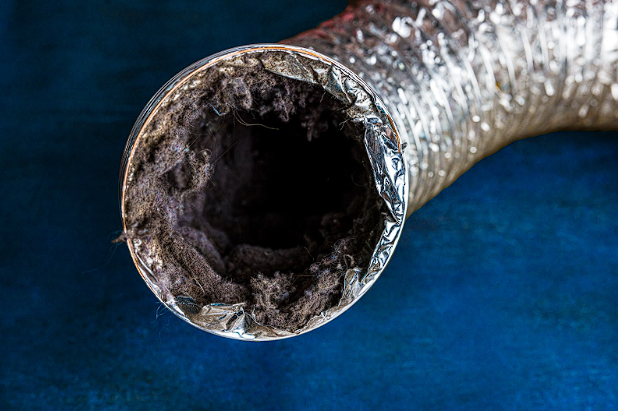Mold in your air ducts can be more than an eyesore. It harms the air quality in your home leading to health issues and even costly repairs if left untreated.
Learning how to get rid of mold in air ducts not only keeps your air clean. It also helps your HVAC system run smoothly. This guide explains safe methods for mold removal. There are also tips for preventing its return and when to seek professional help from experts like Filterbuy HVAC Solutions.
Top Takeaways
- Mold spreads quickly. It harms health and damages your system.
- You can spot it by looking for dark spots, musty smells or allergy signs.
- Safe cleaning needs protective gear. Plus the right tools and safe cleaners.
- Drying and controlling humidity are vital. This prevents mold from returning.
- Filterbuy HVAC Solutions offers expert air duct cleaning. Also, mold removal for lasting results.
Identifying Mold in Your Air Ducts
Identifying mold is the first step in resolving the issue. The most common types in ducts are Aspergillus, Cladosporium and Stachybotrys (black mold). They appear in shades of green, brown or black. They also give off a strong musty odor.
Look for early clues. The early stage signs of black mold in air vents often include small black specks, unusual smells, or worsening allergy symptoms. Mold in HVAC vents may cause headaches. It can even trigger asthma if left untreated.
Act quickly. If you ignore mold, it spreads. It also damages property and creates bigger health risks.
Tools and Steps to Clean Mold in Air Ducts
To safely kill mold in air ducts, you’ll need a few key tools:
- Testing kit to confirm mold and know its type.
- HEPA vacuum to remove spores – without sending them back into the air.
- Protective gear – like gloves, goggles and a respirator.
Once prepared, clean the ducts carefully. Spray to kill mold in air ducts. Then scrub and wipe surfaces with safe solutions like vinegar and baking soda. Finish by vacuuming with your HEPA system.
This helps in small cases. But mold often spreads deeper than you can see.
Preventing Future Mold Growth
Removal goes beyond just cleaning. Prevention matters just as much.
- Check your system regularly. Look for signs of leaks. Also moisture buildup or water damage. Address issues promptly.
- Control humidity. Use a dehumidifier to maintain humidity between 30% and 50%.
- Enhance ventilation. Air out bathrooms, kitchens and laundry areas.
- Replace filters often. Clean filters improve airflow and reduce spores moving through ducts.
Mold & Indoor Air: Key Numbers to Know
Mold in your air ducts isn’t just a nuisance. It can seriously affect the air you breathe.
- People spend about 90% indoors. This makes indoor air quality critical (EPA).
- Buildings with dampness or mold carry a 30–50% higher risk of breathing problems. They also increase the chance of asthma and other health issues. (Lawrence Berkeley National Laboratory).
- To prevent mold growth, specialists advise maintaining indoor humidity levels – between 30% and 50% (CDC).
Why Choose Filterbuy HVAC Solutions for Mold in Your Air Ducts
Sometimes, even with prevention and cleaning, mold keeps coming back. That’s when professional services are needed.
Filterbuy HVAC Solutions uses advanced tools and treatments to fully clean your ducts and stop mold from returning. With local service in Stuart, FL, you can book mold and duct cleaning online for trusted results.
Here’s what sets us apart:
- 6× stronger suction with HEPA filtration to capture spores
- Rotobrush system for deep vent-by-vent cleaning
- Long hoses and multiple brushes to reach every corner
- Antimicrobial treatments to prevent regrowth
- Upfront pricing with no hidden fees
- Optional UV lights and duct encapsulation for lasting protection
- Hundreds of 4.8-star reviews from local homeowners
When it comes to mold in your ducts, don’t settle for surface-level fixes. Filterbuy HVAC Solutions delivers deep cleaning, prevention, and lasting peace of mind.
Frequently Asked Questions
Can mold be removed from ductwork?
Yes. Use mold killing sprays or a HEPA vacuum. Some people also use UV light systems for AC duct mold removal. Regular maintenance helps avoid mold by fixing leaks. Also in lowering humidity and checking ducts often.
How do you get mold out of air vents?
Clean small spots with safe sprays and a HEPA vacuum. If you need to get rid of black mold in air vents, it’s best to call experts. They have the right tools to remove mold fully and stop it from spreading again.
What are the symptoms of mold in your air ducts?
Mold in air ducts symptoms include coughing, sneezing or itchy eyes. You also notice musty odors. In some cases, mold causes headaches, wheezing or asthma flare-ups.
What is the best way to kill mold spores in the air?
Air purifiers with HEPA filters trap spores and improve air quality. Some people also use a spray to kill mold in air ducts. Professional air duct mold removal adds stronger and lasting protection.
How common is mold in HVAC ducts?
It’s very common. Dark and damp areas create the right conditions. Mold grows after leaks or high humidity. Types like Cladosporium, Penicillium and Aspergillus are found when cleaning mold from AC ducts.
Can you spray vinegar in air vents?
Yes. Vinegar is a natural way to clean AC ducts mold. Its acidity kills many types of spores. This makes it a simple and safe choice for small mold patches.
What are the signs of mold sickness?
Mold exposure causes trouble breathing or constant coughing. It also brings skin irritation, watery eyes and sinus issues. In severe cases symptoms lead to fever or shortness of breath.
How do I prevent mold in my HVAC ducts?
Humidity control is the key. Keep indoor levels below 50%. Repair leaks quickly. Regular inspections and filter changes also lower the chance of needing AC duct mold removal later.
What is the white mold in my air ducts?
It looks like white dust or powder on vents or duct surfaces. White mold appears in clusters. It should be removed quickly to prevent spreading.
What are the drawbacks of duct cleaning?
If done too often or the wrong way, duct cleaning damages your system. Repairs can get expensive. Always hire trusted experts when scheduling air duct mold removal near me.
How long does it take for mold to grow in air ducts?
Mold starts growing within 24 to 48 hours after moisture exposure. Without removal, it spreads in one to two weeks. That’s why knowing how to clean mold out of air ducts quickly is important.
How do I clean mold out of my AC?
Turn off the unit and open it. Vacuum with a HEPA filter to catch spores. Scrub surfaces with vinegar or a safe cleaner. Then rinse and dry well. This works for small cases. But how to remove mold from air conditioner ducts fully requires professional help.







